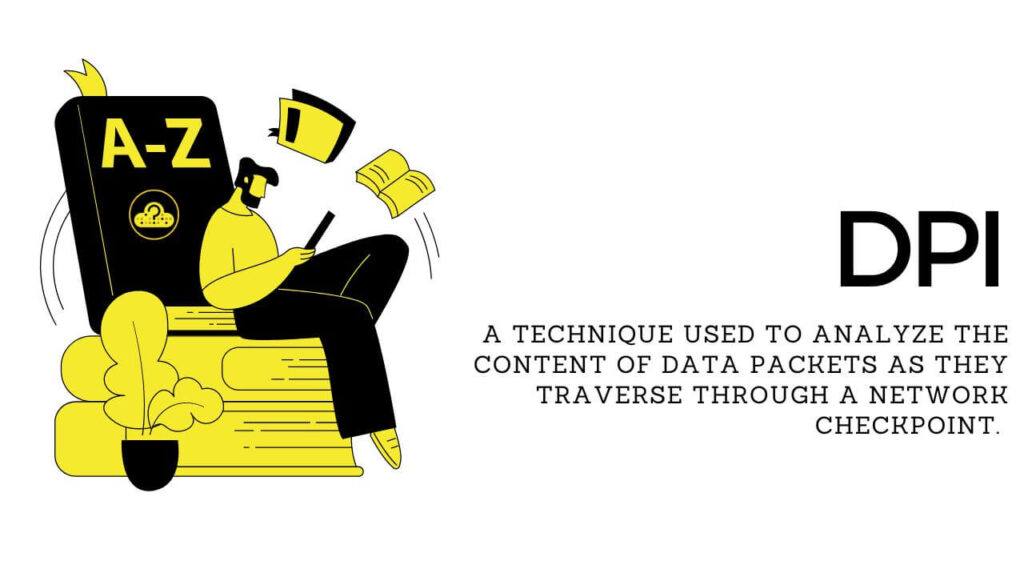What Is Deep Packet Inspection (DPI)?
- Short Definition:
- Deep packet inspection (DPI) is a technology used to examine the contents of network packets in order to gain detailed insights into the data being transmitted. It works by analyzing the data and header sections of each packet that passes through an inspection point in the network.
- Extended Definition:
- Deep packet inspection (DPI), or commonly referred to as packet sniffing, is a technique used to analyze the content of data packets as they traverse through a network checkpoint.

While traditional packet inspection focuses on examining packet header information such as destination IP address, source IP address, and port number, DPI goes a step further by scrutinizing a broader set of metadata and data associated with each packet it encounters. In DPI, both the packet header and the actual data payload are subject to inspection.
The functioning of DPI involves the examination of data packet contents based on predefined rules, which are typically programmed by the user, administrator, or internet service provider (ISP). Subsequently, DPI determines the appropriate action to be taken upon identifying threats. When detecting the presence of threats, DPI leverages the packet’s content and header information to trace its origin, thereby enabling the identification of the specific application or service responsible for launching the threat.
By encompassing a wider scope of packet analysis, DPI offers an enhanced approach to network packet filtering. In addition to the capabilities of conventional packet-sniffing technologies, DPI can detect concealed threats within the data stream, including potential data leak attempts, content policy violations, malware, and other malicious activities.
Moreover, DPI can be configured to work in conjunction with filters that facilitate the identification and rerouting of network traffic originating from particular online services or IP addresses.<
How Does DPI Work?
Here is a simplified explanation of how DPI works:
- Packet Capture. As network packets flow through a specific point in the network, such as a router or firewall, they are captured for inspection.
- Packet Decomposition. Each captured packet is dissected into its data and header components. The data section contains the actual payload, while the header contains information about the source and destination addresses, protocol used, and other metadata.
- Content Analysis. The data section of the packet is thoroughly examined by DPI algorithms. These algorithms can perform various operations, including pattern matching, protocol analysis, and content extraction. They analyze the packet’s contents to identify specific patterns, signatures, or behavior that may indicate certain types of traffic, such as spam, malware, or suspicious activities.
- Rule-Based Processing. DPI compares the analyzed data against a set of predefined rules or criteria. These rules can be customized to match specific policies, compliance requirements, or security objectives. For example, the rules may specify conditions for identifying and blocking packets containing known malware signatures or sensitive information.
- Action Decision. Based on the results of the content analysis and rule matching, DPI makes a decision on how to handle the packet. This decision could involve allowing the packet to proceed, blocking it, redirecting it to another destination, or applying other network-specific actions.
- Logging and Reporting. DPI systems often maintain logs and generate reports to provide visibility into network traffic patterns, security events, and compliance issues. These logs can be used for troubleshooting, forensics, and auditing purposes.
It’s important to note that DPI raises concerns related to privacy and data inspection. As DPI technology can access the actual content of packets, it has the potential to intrude on user privacy if not appropriately used and protected. Therefore, its implementation should be accompanied by robust security measures, legal considerations, and transparency to ensure responsible use and safeguard user privacy.
For more definitions, check out our dedicated Definitions List.
